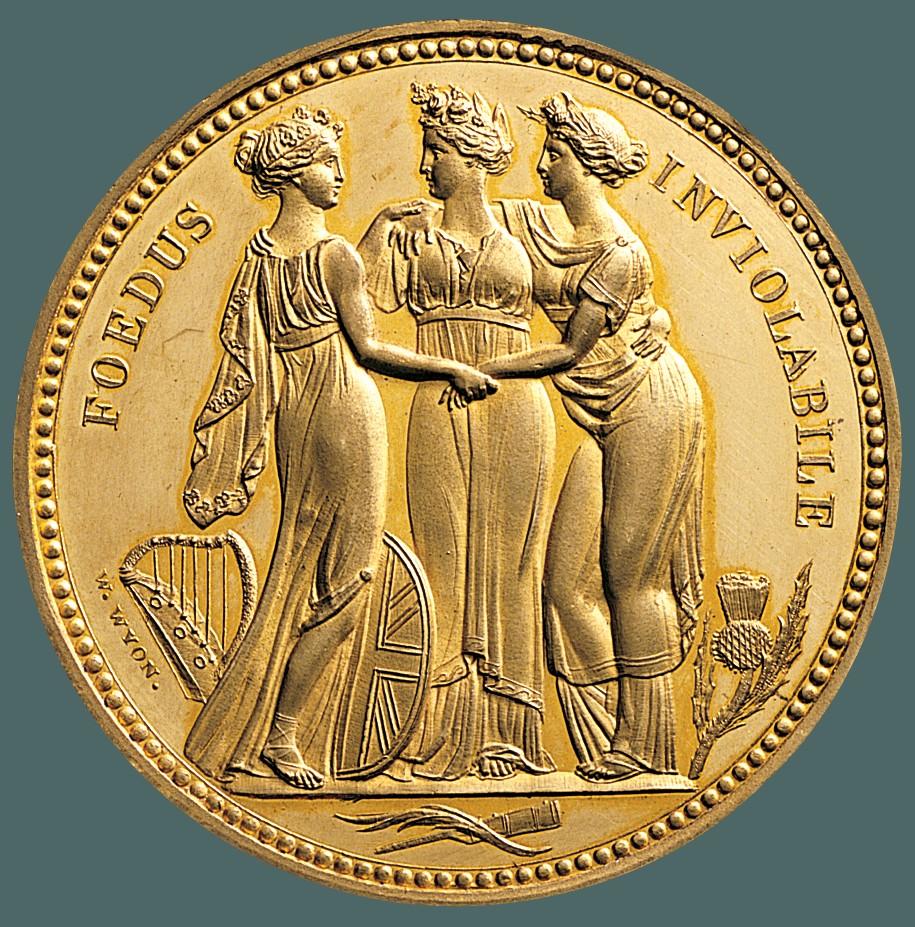"Three Graces" crown
Medalist: William Wyon British
Not on view
The Peluso collection of English coins reveals the extraordinary accuracy achieved by the Royal Mint late in the reign of George III (r. 1760–1820). The superiority of its coinage owed much to the introduction of steam-powered minting machinery. Only three gold specimens of the "Three Graces" crown are said to have been struck; it was never intended for general circulation. The dies were painstakingly prepared so that the matte finish of the raised areas sets them apart from the brilliantly burnished background. The trio on the reverse represents Ireland (with her attribute, the harp), Britain (with the Union flag on her shield), and Scotland (beside a thistle). They are more decently clad than the figures in Antonio Canova's marble group of the Three Graces but are manifestly inspired by them, hence the nickname. The second version of Canova's group, now shared by the National Gallery of Scotland, Edinburgh, and the Victoria and Albert Museum, London, was famous in England even before it was shipped there in 1818.
Due to rights restrictions, this image cannot be enlarged, viewed at full screen, or downloaded.
This artwork is meant to be viewed from right to left. Scroll left to view more.




